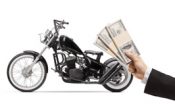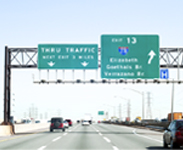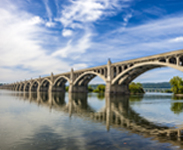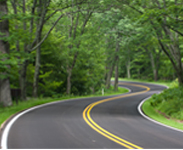
Home > Motorcycle Community > Motorcycle Tech Tips > Motorcycle Tire Pressure and Repair
Motorcycle Tire Pressure and Repair
When we head out on the road, we trust our motorcycle tires to perform as expected. However, tire pressure is one of the most commonly neglected maintenance tasks. This is unfortunate as tire pressure is the most common cause of poor performance and handling. If you are not regularly checking your tire pressure, it is likely that you are not riding on the correct psi. This guide will help you check your tire pressure and know what to do should you need motorcycle tire repair.
How to Check Tire Pressure
If you regularly ride your motorcycle, you should check your tire pressure once a week. If you occasionally ride, you should check your tire pressure before every ride. It is best to check your tire pressure when the tires are cold.
Wait at least three hours to check your tire pressure after riding. It takes several hours for your tires to cool down fully, otherwise you won’t get an accurate psi reading. If you must check your tire pressure with hot tires, add four psi to the recommended cold psi. This accounts for the change in pressure due to temperature.
Inflating a Tire
Only inflate a motorcycle tire when it is attached to your motorcycle or a tire-mounting machine. It is dangerous to inflate a tire that is not secured. You should also only inflate cold tires. The tire pressure changes when the tires are hot and cold. The ideal psi is measured when the tire is cold, so inflating when cold ensures you get the correct psi.
What is the Ideal Tire Pressure?
There is no single perfect motorcycle tire pressure. Check your motorcycle’s owner’s manual for the ideal tire pressure for your bike. Some motorcycles have the same psi for the front and rear tires. While others have a different ideal psi for the front and rear tires. There is a tire pressure stamped on the side of your tires. However, this is the maximum psi and load for your tire. This is not the ideal operating psi for your particular motorcycle.
The manufacturer’s tire pressure will work for the majority of riders in a majority of riding situations. In some situations, an experienced rider may find adjusting the tire pressure helpful. For example, if your motorcycle is heavily loaded for a long trip, you may want to increase your tire pressure slightly. In contrast, riders heading on low traction surfaces may want to reduce the tire pressure slightly.
For the majority of riders, adjusting the tire pressure is not necessary. However, if you adjust your tire pressure, do so in small increments. Then check the tire pressure often and monitor the changes in your motorcycle performance.
The Danger of Under and Over-Inflated Tires
Improperly inflated tires are a significant safety risk for the rider. You are more likely to lose control of the motorcycle and are at greater risk of excessive wobbling. At best, you won’t get the whole useful life out of your tires. Uneven tire wear creates excessively worn spots. At worst, you could experience sudden total tire failure.
Over-Inflation
When you over-inflate a tire, it causes the center of the tire to bulge. This reduces the contact patch, which reduces traction. It also creates a firmer tire resulting in a harsher ride. Firmer tires are also more susceptible to punctures, cuts, and impact damage.
Under-Inflation
Under-inflated tires have too much flex through the sidewall. The increased contact with the road generates excessive heat, causing your tires to run hotter than they should. In addition, the increased rubber contact creates excessive grip, increasing fuel consumption. Cornering with an under-inflated tire becomes significantly more challenging. The overly flexing sidewalls won’t be able to support the motorcycle’s weight. Over time, you will see fatigue cracking on the sidewalls from the increased pressure.
Tire Pressure for Heavy Loads
Your motorcycle tires have a maximum load rating, which can be found on the sidewall. Do not overload your motorcycle and go over this maximum weight. Over-inflating your tires won’t increase their maximum load-carrying ability. It only increases the tread wear rate while making your ride more uncomfortable.
However, being underinflated is also not good. For every four psi that your tires are under the recommended psi, they lose 60-70 pounds of carrying capacity. While this may not be impactful during short local rides, it can cause significant issues when fully loaded for a trip.
Tire Pressure for Riding in the Rain
There is conflicting advice about the ideal tire pressure when riding in the rain. You will hear contradictory advice that says to increase or decrease tire pressure. The advice that applies will depend on the type of tires you have on your motorcycle. If your motorcycle tires are more like car tires with a wide flat patch, lowering the psi by 10% can increase the contact patch size. This creates better traction by helping to channel the water through the tread better.
Consider increasing the psi if your motorcycle tires are more like bicycle tires with a narrow, round shape. Slightly increasing the psi by 5 accentuates the tire’s shape and helps it cut through the water.
Tire Pressure Check:
- Gather Equipment: Prepare a tire pressure gauge, a reliable source of compressed air, and any tools necessary for removing the valve cap.
- Check the Manufacturer’s Recommended Pressure: Locate the recommended tire pressure for your motorcycle. This information is typically found in the owner’s manual or on a sticker on the motorcycle itself.
- Check When Cold: Measure tire pressure when the tires are cold, as the pressure increases as the tires heat up during riding.
- Remove Valve Cap: Unscrew the valve cap from the valve stem. Keep it somewhere safe to avoid losing it.
- Check Pressure: Press the tire pressure gauge onto the valve stem firmly and hold it until the gauge’s reading stabilizes. Note the pressure reading.
- Compare to Recommended Pressure: Compare the measured pressure with the manufacturer’s recommended pressure. Add air if the pressure is too low or release air if it’s too high.
- Check All Tires: Repeat the process for both front and rear tires.
- Replace Valve Caps: Screw the valve caps back on securely to prevent dirt and moisture from entering the valve stems.
How to Plug a Motorcycle Tire
While there are emergency tire patches for motorcycle tires, it is best not to attempt motorcycle tire repair yourself. Remember, you are riding on two wheels. So, if one is compromised, you are putting yourself at great risk. If you must use a tire plug, it should only be in the case of an emergency. You should then carefully go straight to a shop to replace the tire. Motorcycle tire manufacturers agree that a plug is a temporary flat motorcycle tire repair.
When you have a tire plug in place, keep your speed low. Your tire’s speed rating is no longer valid. High speed stresses the tire and can compromise the plug’s integrity.
Avoid using one-step spray goo like “Fix a Flat.” It throws off the tire’s balance and functionality, making it harder to ride. It can also make tire replacement harder.
When to Not Attempt a Tire Repair
If you have a nail in your motorcycle tire, you have a small puncture that should be relatively simple to plug. However, there are times when you should not attempt a repair. If the puncture is bigger than ¼ inch, the hole is too big to repair safely.
If the damage is outside of the tread, it should not be repaired. The sidewall is compromised and the repair won’t withstand the stress when you lean.
Ride Safe with Properly Inflated Tires
Knowing how to check tire pressure is a skill that every motorcycle rider should have. Routinely checking your tire pressure ensures your bike is ready for the road. Not only will it make your bike safer to ride, but it will be more enjoyable too. Having the correct amount of insurance is another way to protect yourself while riding. Our knowledgeable team can help you purchase the right type and amount of coverage.
Give Rider a call or get an online quote today and ride out feeling confident that you and your bike are protected.





